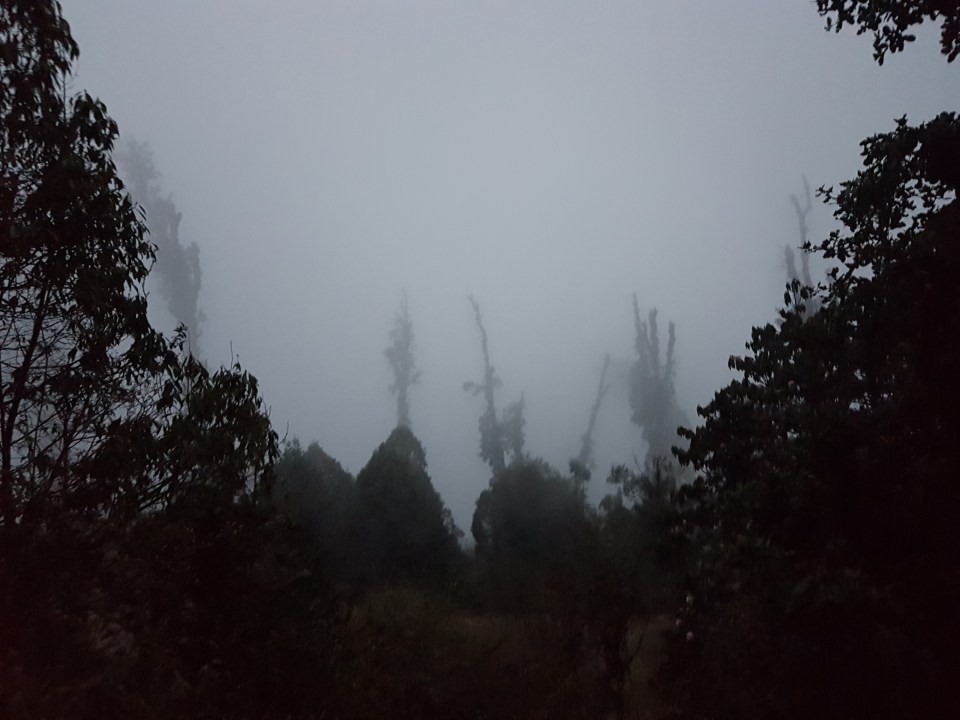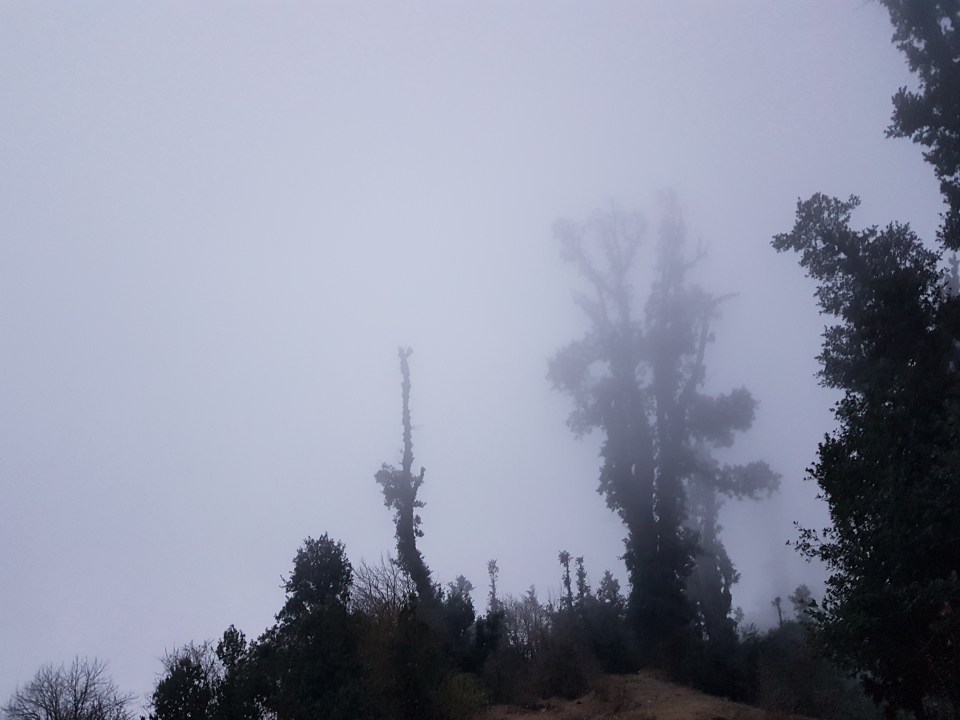
One of the plants that really intrigued me during my time in Nepal was a species of evergreen oak that is native to the Himalayas and nearby mountainous areas of Asia. It goes by the name of Quercus semecarpifolia and, as far as I am aware, has no common English name. Two things surprised me about this species.
First of all, it is heterophyllous, meaning that its leaves come in more than one type. Leaves close to the ground are spiky and look a lot like those of holly (Ilex spp.) which is what I thought they were when I first saw them:

Leaves higher up on the plant have far fewer, if any, spikes:

One of the things I discussed with the students was the job of scientists to identify patterns and to develop hypotheses about processes, i.e. what had caused those patterns. In this case, after some discussion, we decided that the heterophylly was probably an adaptation to defend the leaves against small browsing mammals such as deer (thanks to Narayan for this image):

The other thing that interested me about the oak was its overall growth form, which was tall (they grow to 30m) with rather short, stubby branches, very distinctive from a distance:

The tree were especially striking in the evening mist:



They look as though someone has been out with a chainsaw and trimmed them, but that’s not the case, they naturally grow that way. The best hypothesis that we could come up with is that this is an adaptation that prevents the trees from accumulating large, heavy loads of snow which could result in branches breaking. So it turns out that we were wrong – people are indeed responsible for the unusual growth form: see the comments below.
I’ve never seen this growth form, nor heterophylly in any other oak species, but Quercus is a large genus of about 600 species, so I wouldn’t be surprised if similar species exist.
Part 4 to follow.

I wonder whether the branch pattern is due to shredding:
https://en.wikipedia.org/wiki/Shredding_(tree-pruning_technique)
As far as we could tell, Mike, this is the natural growth form of the plants. Even on inaccessible slopes and ridges the trees looked like this.
Avoiding excessive snow loads does seem reasonable… and escape from extreme winds might also play a role. Both of these potential adaptation strategies could also be evident among other species in the area – did you notice any other species present with members from widely disparate environment(s)?
No, not specifically.
Hi Jeff, I am a silviculturist from Nepal who works with these trees. You might have found out by now, these Khasru oaks indeed have had their canopies lopped off (near annually), even in those inaccessible slopes (easy work for Nepali folk). Mike – it looks like ‘shredding’ but the lopping of oaks rarely involves the intentional retention of foliage (and long-term planning for timber production) that you find in the shredding of pines and hemlocks. When released from this disturbance, Khasru trees can form large canopies.
Thanks for the clarification! It’s always good to hear from experts. I will update the text in this blog pots. Presumably the removed foliage is used to feed livestock and the branches burned?
Hi Jeff!
Well done!!! Your trip was a success.
Good luck
Leila